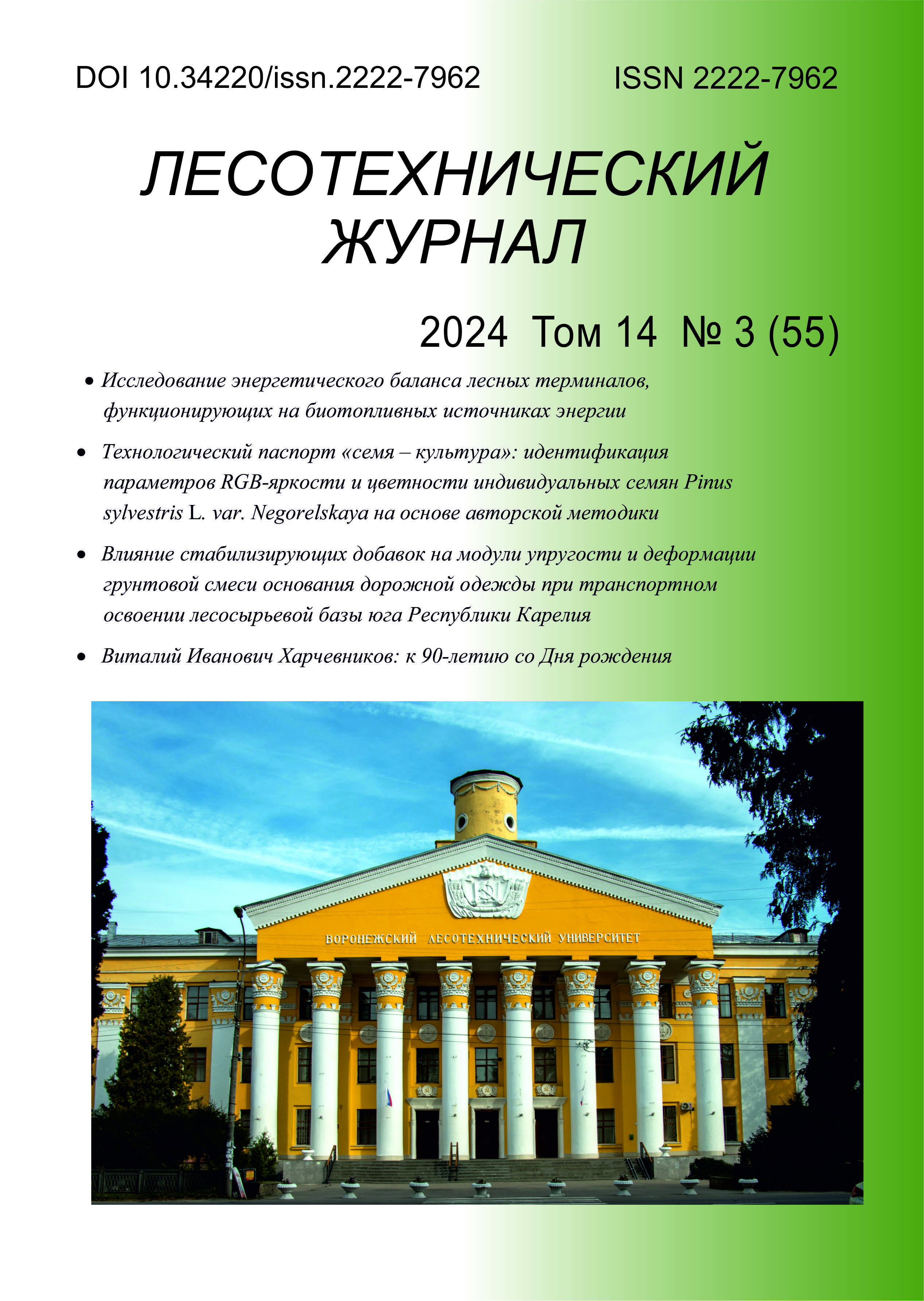Voronej, Voronezh, Russian Federation
UDC 630
Exergy was introduced as a determinant of the state, structure and function of an ecosystem. This value can be represented in two hypostases: the first is the energy stored in the ecosystem, the second is its degradation and entropy formation. Currently, the concept of exergy in ecology is used to redefine the Darwinian principle of "survival of the fittest" into "ecological thermodynamics", according to which the most adapted ecosystem is able to use and conserve flows of energy and materials in the most efficient way. There is a need to adequately calculate the exergy of ecosystems, as information on this characteristic allows not only to manage ecosystems in the short term, but also to predict the capacity of ecosystems to withstand current threats to their integrity and adapt systems to these challenges. The importance of practical calculation of exergy in connection with the above is beyond doubt. Along with the known practice of calculating the exergy of living organisms using gene structure, it is necessary to have alternative ways of calculating exergy. This paper proposes an alternative method for calculating the exergy of forest ecosystems, which contains both elements of the traditional approach to exergy calculation and new provisions related to the use of ecological and physiological models of stand growth dynamics
exergy, entropy density, entropy production and flux, stand dynamics model, Scots pine, Pinus sylvestris L., European spruce, Picea abies L., Siberian pine, Pinus sibirica Du Tour, Quercus robur, Common oak, Betula pendula Roth, Sagebrush birch
1. Nielsen, S.; Müller, F.; Marques, J.; Bastianoni, S.; Jørgensen, S. Thermodynamics in Ecology—An Introductory Review. Entropy2020, 22, 820. [CrossRef] [PubMed]
2. A. Piernik, A. Nienartowicz, E. Buonocore, P.P. Franzese. Measuring natural capital value and ecological complexity of lake ecosystems Ecological Modelling, 482, 110401 - August 2023 https://doi.org/10.1016/j.ecolmodel.2023.110401
3. Hai Qi, Zhiliang Dong, Xinshang et al., You Extended exergy accounting for assessing the sustainability of agriculture: A case study of Hebei Province, China, June 2023, Ecological Indicators 150:110240, DOI:https://doi.org/10.1016/j.ecolind.2023.110240
4. Trancossi, M., Pascoa, J., Catellani, T. (2023). "Exergy, ecology and democracy - concepts of a vital society or a proposal for an exergy tax 30 years after - Part 1: Generalities". Thermal Science. 27 (2 Part B): 1337–1353. doihttps://doi.org/10.2298/TSCI220907019T. S2CID 256672399.
5. Trancossi, M., Pascoa, J., Catellani, T. (2023). "Exergy, ecology and democracy - concepts of a vital society or a proposal for an exergy tax 30 years after - Part 2: Exergy and UN sustainable development goals". Thermal Science. 27 (3 Part B): 2359–2375. doihttps://doi.org/10.2298/TSCI220907020T. S2CID 256687017.
6. Seidel Dominik, Ammer Christian. Towards a causal understanding of the relationship between structural complexity, productivity, and adaptability of forests based on principles of thermodynamics // Forest Ecology and Management. 2023; 544:121238. DOI: https://doi.org/10.1016/j.foreco.2023.121238.
7. Tablicy i modeli hoda rosta i produktivnosti nasazhdeniy osnovnyh esoobrazuyuschih porod Severnoy Evrazii : normativno-spravochnye materialy / A. Z. Shvidenko, D. G. Schepaschenko, S. Nil'son, Yu. I. Buluy. – 2-e izd., dop. M., 2008: 886. Rezhim dostupa: https://www.elibrary.ru/fqdwdk.
8. Lisicyn, V.I. Modelirovanie dinamiki hoda rosta drevostoev na osnove termodinamicheskogo podhoda / V. I. Lisicyn, M. V. Drapalyuk, N. N. Matveev // Izvestiya vysshih uchebnyh zavedeniy. Lesnoy zhurnal. 2022; 3 (387): 213-225. DOI: https://doi.org/10.37482/0536-1036-2022-3-213-225.
9. Lisicyn V.I. Dinamika rosta hvoynyh drevostoev Pinus sylvestris L., Picea abies (L.) H.Karst. i Pinus sibirica Du Tour: modificirovannaya model' / V.I. Lisicyn, T.P. Novikova, A.I. Novikov // Lesotehnicheskiy zhurnal. – 2024. – T. 14. – № 2 (54). – S. 54–69. – DOI: https://doi.org/10/34220/issn.2222-7962/2024.2/4
10. Lisitsyn, V.I.; Matveev, N.N. Entropy Production Using Ecological and Physiological Models of Stand Growth Dynamics as an Example. Forests 2022, 13, 1948. https:// doi.org/10.3390/f13111948
11. O.Kuricheva, V.Mamkin, R.Sndelersky, J.Puzachenko, A.Varlagin and J/Kurbatova, Radiativ entropy production along the paludification gradient in the Soutern taiga, Entropy, 2017, 19,43, doihttps://doi.org/10.3390/e19010043
12. Primenenie ekologo-fiziologicheskogo modelirovaniya dlya opisaniya dinamiki rosta dubovyh drevostoev /V. I. Lisicyn, N. N. Matveev, N. S. Kamalova, N. Yu. Evsikova, S. V. Vnukova // Lesa Rossii: politika, promyshlennost', nauka, obrazovanie : materialy VIII Vserossiyskoy nauchno-tehnicheskoy konferencii, 24-26 maya 2023 g. – Sankt-Peterburg, 2023. - S. 283-286
13. Modelirovanie dinamiki rosta berezovyh drevostoev /Lisicyn V.I., Matveev N.N., Evsikova N.Yu., Kamalova N.S., Vnukova S.V.// Lesa Rossii: politika, promyshlennost', nauka, obrazovanie : materialy H Vserossiyskoy nauchno-tehnicheskoy konferencii, 22-24 maya 2024 g. – Sankt-Peterburg, 2024, - S. 166-169
14. Ahmadi M., Keyhani A., Rosen M.A. et al. Towards sustainable net-zero districts using the extended exergy accounting concept. Renewable Energy. 2022; 197: 747-764. DOI: https://doi.org/https://doi.org/10.1016/j.renene.2022.07.142
15. A Biondi, A contribution to the search for a thermodynamics-based sustainability indicator: Extended Exergy Analysis of the Italian system (1990–2012) and comparison with other indicators, Energy Volume 244, Part B, 1 April 2022, 123100, https://doi.org/https://doi.org/10.1016/j.energy.2022.123100
16. L G Carmona a d, K Whiting b, D Wiedenhofer et al., Resource use and economic development: an exergy perspective on energy and material flows and stocks from 1900 to 2010, Resources, Conservation and Recycling Volume 165, February 2021, 105226, https://doi.org/10.1016/j.resconrec.2020.105226
17. X. Huang, C. Feng, J. Qin, X. Wang, T. Zhang, Measuring China's agricultural green total factor productivity and its drivers during 1998–2019, Sci. Total Environ., 829 (2022), Article 154477, https://doi.org/10.1016/ j.scitotenv.2022.154477
18. R F Mosquim, C Eduardo, K Mady, Design, performance trends, and exergy efficiency of the Brazilian passenger vehicle fleet: 1970–2020, Journal of Cleaner Production, Volume 290, 25 March 2021, 125788, https://doi.org/10.1016 /j.jclepro.2021.125788
19. M H Noorani; A Asakereh; M R Siahpoosh, Investigating cumulative energy and exergy consumption and environmental impact of sesame production systems, a case study, International Journal of Exergy (IJEX), Vol. 42, No. 1, 2023, https:// doi.org/10.1016/j.apenergy.2019.113618
20. D A PACHECO-ROJAS, G LEON-DE-LOS-SANTOS, C MARTÍN-DEL-CAMPO, Exergy analysis of the Mexican energy sector, Sustainable Energy Technologies and Assessments, Volume 53, Part B, October 2022, 102540, https:// doi.org/10.1016/j.seta.2022.102540
21. Z Meng, P Jin, X Wu , B Zhang, J Gao, An improved extended exergy accounting method for assessing the sustainability of the Chinese society, Journal of Cleaner Production, Volume 354, 20 June 2022, 131739, https://doi.org/https://doi.org/10.1016/j.jclepro.2022.131739












